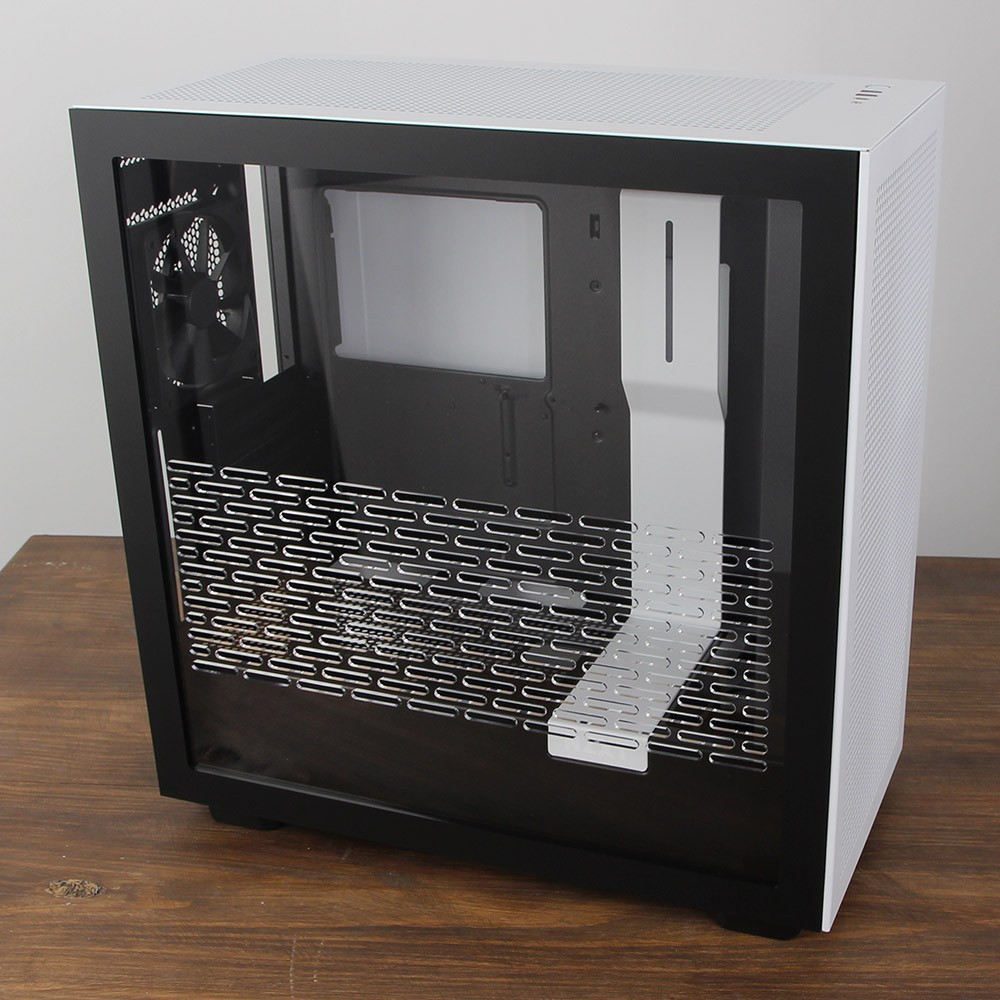
The main challenge I encountered was to screw one screw on the back of the case, the one near the HDD bays. I could mount the shroud without having to uninstall any components. I don't think it's as bad as this other reviewer said ("Hey buddy, l feel you though! I went through the same suffering you experienced with this case!"). l don't think you could mount this cover if you have 2 HDDs mounted there).So yes, l like the way the case looks now better than before, without the shroud. It looks nice and does the job of covering the PSU and cables (perhaps also the one HDD drive you may have installed at the bottom. the PSU shroud itself is made of good quality materials. These BeQuiet! people truly let me down so bad!Anyway. Alright, alright, let's not generalize here. It's truly hard to design something so clumsy and 'user's unfriendly,' even intentionally.Ever since I have this case I laugh so badly when l read "German design, Chinese made." Boy I wished it had been "Chinese design, German made". Well, l tell you what: you'd come up with something similar to the DB900 Pro, probably better.
#Psu shroud Pc#
The case is a pain to work with and, as a consequence, so is this PSU shroud.Imagine you've got a very low 'IQ' but you are given the task to design a PC case. The PSU shroud suffers from the flawed design of the Dark Base 900 Pro. You can increase the intake fan speed or lower the speed of exhaust fans to create a neutral or positive pressure inside the case.Reviewed in the United Kingdom on 27 October 2019 In case the PSU fan spins too fast and creates negative pressure, use fan controllers to balance the airflow. The negative pressure in the case allows air to be drawn in through crevasses and cracks, which allows dust to infiltrate your PC. Negative pressure arises when there is less air going in through the vents and into the case than coming out of the exhaust. This is especially important if you open up the air inlets or increase the inlet fan speed on account of an added PSU exhaust.
#Psu shroud install#
If you opt to install the PSU fan facing up, it is critical that you balance the airflow to negate negative pressure from arising. When installed facing down, the PSU fan creates somewhat of a closed environment with its own airflow that does not interact with the rest of the airflow in the case. This is because installing the fan facing upwards is akin to adding another exhaust fan, which interacts with the overall airflow in the case. PSU fans usually affect the overall airflow when they are installed facing upwards. PSU Airflow And Negative Pressure Explained

However, installing the fan facing down when the case has a filtered vent at the bottom of the case is recommended. With the vented shroud, you can house the fan facing upwards or downwards. The fan will draw air from the bottom and exhaust hot air from the rear, just like cases without PSU shrouds.Ĭases With PSU Shrouds With Top Vents – There are cases with vents atop of the shroud. When your PC case has an all mental shroud, you should install the fan facing down. In fact, there is no other way to install the fan in such cases.Ĭases With PSU Shrouds – Some high-end PC cases have a PSU shroud designed to protect the power supply unit as well as the bottom-mounted drives. As such, you have to expand the intake vents to account for the extra intake.Ĭases Without Bottom Vents – In the rare event you are working with a case that does not have a bottom vent, you should install the fan facing upwards. However, you’ll have to contend with compromised heat dissipation as the air passing through the PSU will already be hot. Placing the fan facing upwards effectively adds another exhaust fan.


Installing the fan facing upwards also negates the fan inlet's chances of ingesting the hot exhaust air, as happens when the inlet is facing downwards. You can still install the fan facing upwards, especially if you plan to place the PC on a surface that curtails the fan’s ability for intake, such as a carpet. A downward-facing fan will intake fresh air from the bottom through dust filters and expel hot air from the rear. When working with such a case, you can install the PSU fan facing up or down.

Cases With Bottom Vents – A bottom-mounted PSU layout with bottom vents is the most common layout for modern PC cases.


 0 kommentar(er)
0 kommentar(er)
